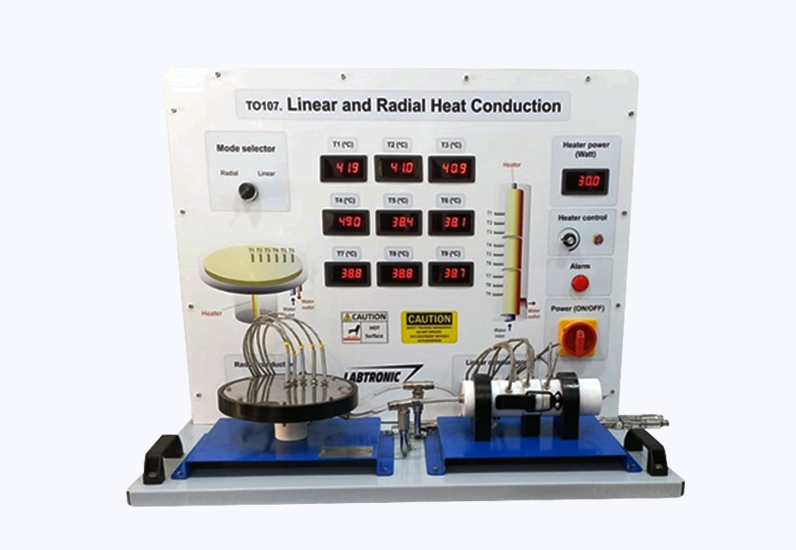

The Labtronic Radial and Linear Heat Conduction apparatus is an advanced training tool designed to explore the principles of heat transfer through conduction in both linear and radial configurations. This unit is divided into two distinct modules: the linear heat conduction unit and the radial heat conduction unit.
Linear Heat Conduction Unit:
1. Heating Section: A brass segment heated by an integrated electric heater, equipped with three temperature sensors to monitor temperature variations across the heating zone.
2. Cooling Section: A brass segment cooled by running water, also fitted with three temperature sensors to track temperature changes within the cooling area.
3. Intermediate Sample Section: A removable sample placed between the heating and cooling sections, featuring two temperature sensors for precise measurement of temperature gradients within the sample.
The sections are co-axially aligned within plastic housings to minimize heat loss, and secure clamps ensure the segments are held tightly together during operation.
Radial Heat Conduction Unit:
The unit is designed with user convenience in mind, featuring adjustable water flow control via a manual valve. The flow rate can be measured manually or with an optional flow sensor.
Software Integration: